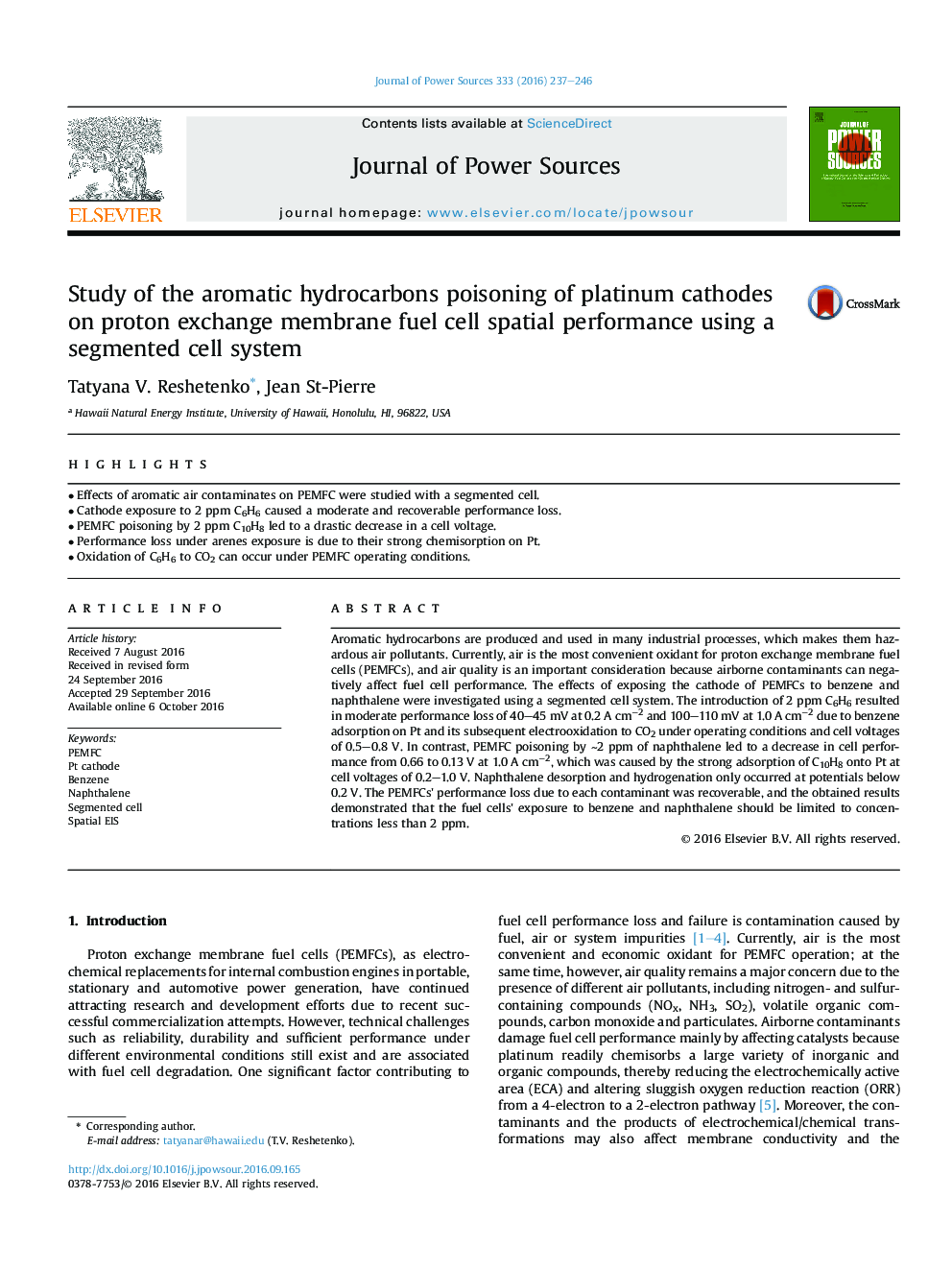| Article ID | Journal | Published Year | Pages | File Type |
|---|---|---|---|---|
| 5150062 | Journal of Power Sources | 2016 | 10 Pages |
Abstract
Aromatic hydrocarbons are produced and used in many industrial processes, which makes them hazardous air pollutants. Currently, air is the most convenient oxidant for proton exchange membrane fuel cells (PEMFCs), and air quality is an important consideration because airborne contaminants can negatively affect fuel cell performance. The effects of exposing the cathode of PEMFCs to benzene and naphthalene were investigated using a segmented cell system. The introduction of 2Â ppm C6H6 resulted in moderate performance loss of 40-45Â mVÂ at 0.2Â AÂ cmâ2 and 100-110Â mVÂ at 1.0Â AÂ cmâ2 due to benzene adsorption on Pt and its subsequent electrooxidation to CO2 under operating conditions and cell voltages of 0.5-0.8Â V. In contrast, PEMFC poisoning by â¼2Â ppm of naphthalene led to a decrease in cell performance from 0.66 to 0.13Â VÂ at 1.0Â AÂ cmâ2, which was caused by the strong adsorption of C10H8 onto Pt at cell voltages of 0.2-1.0Â V. Naphthalene desorption and hydrogenation only occurred at potentials below 0.2Â V. The PEMFCs' performance loss due to each contaminant was recoverable, and the obtained results demonstrated that the fuel cells' exposure to benzene and naphthalene should be limited to concentrations less than 2Â ppm.
Related Topics
Physical Sciences and Engineering
Chemistry
Electrochemistry
Authors
Tatyana V. Reshetenko, Jean St-Pierre,
